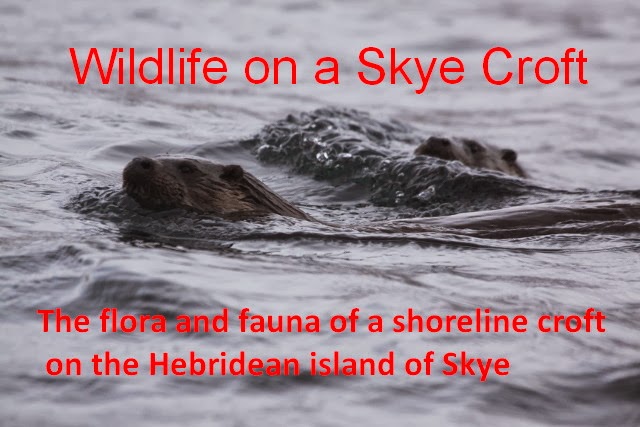There is a seasonal pattern as can be seen in the plot below of sightings by month.

Otters are seen more frequently in the period October to March than they are between April and September (a ratio of over 2:1) The pattern is even more pronounced for multiple sightings. If there is any bias in the data then it would be towards the summer months with much longer days and ease of observation.
I estimated the date of birth of the cubs we saw between January and March, by comparing their size to that of the adult mother from photographs in January and March and then using a chart of the rate of growth of otters in a paper by C Reuther (IUCN Specialist Group Bulletin Vol 16 Issue 1 11-16). This information was for captive animals and it may be that wild animals grow more slowly, so that my estimate that the otters were born in late November and we started seeing them when they were 6 to 8 weeks old, might have been rather later than reality and their age understated.

I also looked at the observation data to see whether there was any preference to the state of the tide, using data from the British Oceanographic Data Centre to provide the time of high tide. Do otters prefer to fish on a rising or falling tide? If there is a preference then it is not marked; maybe a falling off as high tide approaches.

 Spring has been much delayed and there are very few plants in flower. The celandines and primroses are now flourishing but little else. A small patch of Great Woodrush is in flower, growing where I cleared away bracken 2 years ago and will soon be followed by Field Woodrush which is very widespread. But little else, other than a solitary flower of Wood Sorrell.
Spring has been much delayed and there are very few plants in flower. The celandines and primroses are now flourishing but little else. A small patch of Great Woodrush is in flower, growing where I cleared away bracken 2 years ago and will soon be followed by Field Woodrush which is very widespread. But little else, other than a solitary flower of Wood Sorrell.
There are though some more hopeful signs. I heard a cuckoo on Scalpay on 26 April, and other summer visitors have arrived - lots of meadow pipits, a pair of Common Sandpipers, a Wheatear and Stonechat. In the garden there were queens of both Early and White-tailed Bumblebees and the Hoverfly, Eristalis pertinax.
Last weekend there were some very low tides. Moving a buoy anchored to two iron girders gave me a chance to poke around the kelps which was fully exposed. Lots of Starfish and Velvet Swimming Crabs, and a small rather fat round fish which jumped out when I moved one of the girders. It was away before I knew what was going on..
Then I fell over and got completely soaked. The sea is cold!


.JPG)
.JPG)
.JPG)